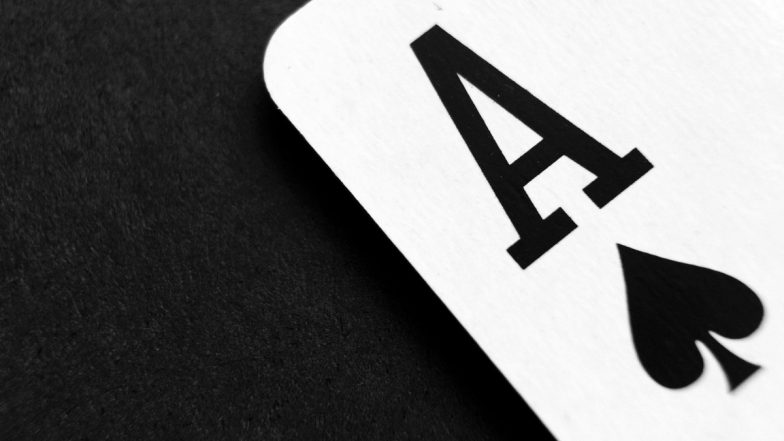‘It was all planned out,” says Adam Johnson. “I knew exactly what I was going to do.” In early 2007, Johnson, then 22, had just finished his degree at the University of Wolverhampton, and was looking forward to a career in glass-blowing.
He had moved into his family home in Seaford in East Sussex with a friend and her one-year-old. He had a job at a bar, with flexible hours to allow for his art and the shows he had lined up. And though he was not yet out to his family, he had a boyfriend, whom he’d been seeing for a few months.
“I was feeling really positive about the future,” Johnson says. He dreamed of becoming a successful artist, his work on display at top galleries. “In my head, it was always going to happen. And then it wasn’t.”
One night in January, Johnson and his boyfriend went out on the town. But the drinking led to arguing and they ended up breaking up on the street. Johnson – drunk, but not blind drunk – went to cross the street for home.
The car hit him at 55mph. Johnson smashed into the bonnet, then spiralled over to crash on to the bitumen behind. “I was just like a sack of jelly in the air,” he says.
The driver, in shock, carried on home, leaving Johnson splayed on the road. (He later returned and took responsibility, meaning that the crash was legally classed as a “failure to stop”, not a hit and run.) The driver of the truck behind saw the collision, stopped and called an ambulance.
Johnson had been wearing his motorcycling gear – jeans, a leather jacket and heavy boots. Doctors later credited it with his survival. As it was, every part of him not covered by leather or denim was “totally annihilated”.
In A&E, Johnson was found to have broken both his legs, his nose and all his front teeth, and was put into a coma to help with his recovery. But his physical injuries proved to be just the tip of his trauma.
Sixteen years later, we’re sitting in the pastel pink-and-green front room of the Brighton home Johnson shares with his husband, Dan, a graphic designer, and their pug, Egg. Propped against the wall, within reaching distance, are Johnson’s lime-green crutches. Every available surface is crowded with mementoes and tchotchkes, many of them Johnson’s own creations. On the windowsill to our right are two small balls of clay, awaiting transformation; to our left, there’s a vintage “ON AIR” sign, a nod to Johnson’s turn on The Great Pottery Throw Down in 2021.
His whimsical, otherworldly creations took him to the show’s finals, capping off a journey of creative and personal exploration. Through Johnson’s long recovery, clay “was more than just a hobby,” he says. “It became my release.”
On the table between us is a sheaf of notes, which Johnson prepared ahead of my visit, detailing his harrowing experience in exuberant purple script. He doesn’t remember the accident – nor, fully, who he was before it. “From what everyone says, I was a real go-getter,” he says. “Then I got run over.” He laughs as he says it, always quick to make light of what he’s endured. “Part of the ongoing – and for ever – trauma of an accident is that you always play it down,” he says.
After Johnson was taken into hospital, his father was contacted in Sri Lanka, where he was living, and told to come home: there was a good chance Johnson was not going to survive. His mother (long separated from his father) travelled to Brighton from Filey, North Yorkshire, while his older sister, Nicole came from London.
After nine days, Johnson came out of his coma to find both his legs in casts, and his body pierced by tubes. “The first thing I did was lick my dry lips – and lacerated my tongue,” he says.
Johnson’s teeth had been smashed from canine to canine. Now he has a flawless smile of fake teeth and veneers, but for weeks after the accident, his mouth was a stretch of jagged, broken enamel, slicing his tongue like a mandoline. “There was blood everywhere,” he says, laughing again, “and then I had to be put back into a coma.”
If Johnson, 39, tells it as a funny story, it’s not just the healing power of time: it’s that he’s only heard about it secondhand. The accident pushed his nose so far inwards that the bone made contact with his brain’s frontal lobe, leaving him with amnesia.
The effects persist today, though they’re difficult to put into words, Johnson says. It’s not like a television picture, fading in and out, but nor does it come rushing back. “It’s kind of like backwards dementia, I imagine: things just suddenly become accessible.”
His memories now, of his life before the collision, are a composite of what he has been told since. He likens it to hearing reports from different friends of the same boozy night out: “Your memory becomes the reconciliation, doesn’t it, if you can’t remember? That’s basically what my brain is like, around the accident: I can probably tell you facts, but I can’t remember them.”
Those weeks in hospital blurred into one fugue. Johnson was drifting in and out of consciousness, on a lot of drugs and only dimly aware of his pain. “Your body goes into a completely different mode, like standby on a computer, where you don’t really even comprehend hunger, or anything other than recovery … I was just very aware that my brain wasn’t right,” he says.
What he didn’t immediately realise was that his family had met his boyfriend – or ex-boyfriend – at his bedside. “So I basically came out in a coma,” he says, cheerily. Now Johnson considers it a “blessing” to have been spared the coming-out conversation – but it did add another layer of complication to “the whole waking up part”.
After 21 days in hospital, Johnson returned home to his dad’s house with a metal rod in his right leg, and plates and screws in his left. Still, doctors were warning that he might never walk again.
Fixing his jagged teeth – “logistically, a nightmare” – was prioritised once he was set up in a bed in the lounge, the only part of the house that was wheelchair-accessible. From there, Johnson began his recovery.
He grimaces to remember physiotherapy – an “awful experience”. His leg muscles had atrophied, and his balance was so affected that he could not stand, let alone get himself in and out of his wheelchair.
For his flatmate, Johnson says, it was like gaining a second child: “I was basically another one-year-old, so she did lots of the care.” But he struggled with being reliant on his mother and father.

Johnson’s parents had separated when he was four; his dad gained custody of him and his sister, but they were raised by their paternal grandparents. From the age of 13, after Nicole had left for university, Johnson had largely been independent.
That suited him; his family just weren’t close like some are, he says with a shrug. But it meant that there was no real caregiving relationship to fall back on when he needed it. Today, Johnson’s family are closer as a result of the experience, he says; at the time, both he and his father struggled. “I needed lots of care that he wasn’t necessarily equipped to give.”
On bed rest, entirely reliant on others, Johnson found his mental health deteriorating. On top of amnesia, he had developed post-traumatic stress disorder, depression and anxiety. “I was young, this go-getter person, then suddenly I was this really fragile shell of a person, having to ask to go to the loo … It was very degrading.”
But traces of his resolute former self remained. “I was not going to have people watch me for the rest of my life. If there was even a glimmer of hope, then I would go towards that glimmer.”
Johnson did his assigned exercises diligently, then sought out more on Google. The one that sticks in his memory is rolling an orange with his foot, “because then I got to eat the orange”.
It was then that Johnson rediscovered clay. He’d always been “crafty”, he says, but during his degree in contemporary applied arts, clay had been no more than a cost-effective material for making glass-blowing moulds – a means to more ambitious ends. Bed bound and struggling, Johnson saw it anew. “I had all the time in the world to make stuff.”
He bought a kiln from eBay and started making models, mostly sea anemones: a small ball with arms reaching out. He felt a rush of pleasure with each one he completed. “Even if it was just a rubbish little thing – it was mine.”
Every other part of Johnson’s life was monitored and controlled; even with family, he felt obliged to put on a positive front. “But in my head I was constantly battling what was essentially a mental breakdown. I didn’t – and don’t – have the brain that I had before.”

The clay gave him an outlet for his feelings and frustrations. “It became my mindfulness, my therapy, the thing I put all of my secrets into,” he says. Unlike glass-blowing, it was accessible and forgiving, and if something didn’t work you could just start over.
As the weeks passed, Johnson’s sea anemones grew more intricate and technically skilled. He began perforating between the spikes, then putting tea lights beneath them so that they would glow from within – a nod to his dissertation, which had been on the “biological, psychological and social effects of lighting on the human brain”. (“Just comprehending that …” Johnson says, shaking his head. “I can barely spell now.”)
Soon Johnson was finishing models at such a rate, he’d switched from sea anemones to sea sponges – fine, perforated vessels he dubbed “kronkles” – because they were easier to fire in bulk. Many are now dotted around his home. Johnson points one out in the fireplace behind us. “I must have made thousands over the years.”
After three months of bed rest, Johnson began using a Zimmer frame alongside his wheelchair, and “learning to be upright again”. Doctors were impressed by his physical progress – but his mind was still struggling. He had been prescribed antidepressants, but other medication was exacerbating his “almost crippling” anxiety, and he was having frequent panic attacks.
When Johnson was able to re-enter the world, in a wheelchair and on crutches, it did not feel like victory. “I found the logistics of it all very traumatic at the beginning,” he says.
He felt vulnerable and exposed, and feared being caught out by his amnesia or having to ask strangers for help. But he had no choice: the accident had emptied his savings, and benefits weren’t enough to live on. Meanwhile, the legal process to secure damages from the driver who had hit him was progressing slowly, in part because the full effect of the accident needed to become clear. (He eventually received a payout in 2017 – a decade after the crash.)
So Johnson got an entry-level job at an opticians in Eastbourne. “It helped me to cope,” he says. “I couldn’t remember anything – but I could help people choose glasses.”
He’d write lists of the tasks he had to complete, “then go into robot mode” ticking them off. “It turns out that that’s basically work,” Johnson says.
But navigating his new disability in public was an added challenge. The accident had left Johnson with significant facial scarring – what’s known as a “tarmac tattoo”.
At home, the “very clear, Biro-blue marks” hadn’t even registered. “At work, people were looking at my face constantly; they would frequently lick their thumbs and rub them on my head,” Johnson says. “That was an awkward conversation …”
He later opted to have the scars removed, in 2014 (the same year the rod was removed from his leg). The procedure was “horrible”, says Johnson – more traumatic than the crash, because he remembers it.
Meanwhile, though Johnson was receiving cognitive behavioural therapy for PTSD, his panic attacks persisted. “There were moments where I considered myself insane.” He secretly feared he would have to be committed, even as, on the outside, he “put on a smile”.
It boiled over within a year of the crash. Johnson was at Euston station in London, en route to a counselling appointment, when a panic attack left him unable to recognise where or who he was. Everything “just cascaded into nothingness”, he says.
For 40 minutes, Johnson sat on the floor of the station, petrified, waiting for reality to return. “I just couldn’t ground my thoughts in any realistic way.” He resolved, then, to take them seriously. Now, when his anxiety flares up, “I just think of a potato,” says Johnson, smiling. “Something tangible. Then all my thoughts can branch out from that.”

Though he still struggles with his mental health and historic injuries, today Johnson considers the accident “the best-worst thing that’s ever happened to me”, helping him along to his rich, full life. He and Dan got together in 2015; when the payout came through, two years later, Johnson bought this flat and quit his job to pursue his passion for ceramics, and “actually be who I want to be”, he says.
Taking up a role with Superstar Arts, a charity fostering creativity in adults with learning disabilities, helped him to reframe his experience and take pride in the “amazing worlds” realised through his art. That gave him confidence to apply for The Great Pottery Throw Down. “I didn’t think I’d survive the first episode,” he says; Dan made him a tiny Daruma doll, a Japanese good-luck talisman, for every week that he escaped elimination.
His time on the show sharpened his drive to live life to the fullest, he says – to make up for lost time, but also in case he is ever bed bound again.
Johnson’s injuries continue to flare and evolve in part because of this tendency to push himself; he’s using crutches now, after spending last weekend on his feet at a craft fair. He’s still reluctant to accept his physical limitations, he says. “I do as much as I can, and jump all in, because I want to create memories and a good photo album to look back at. I want to tick off every single thing.”
His home, a fixture on Brighton’s annual Open Studios route, is a living testament to Johnson’s spirit and the possibilities of creation. From the plate of hyper-realistic Party Rings, made from clay by Dan, to Johnson’s octopus tentacles, extending from nooks and corners, it brims over with the couple’s playfulness.
The lasting lesson of the accident was that “you don’t have to fit in to be happy,” Johnson says. “I think a lot of people spend their lives trying to do that. But there’s beauty in people’s eccentricities.”







